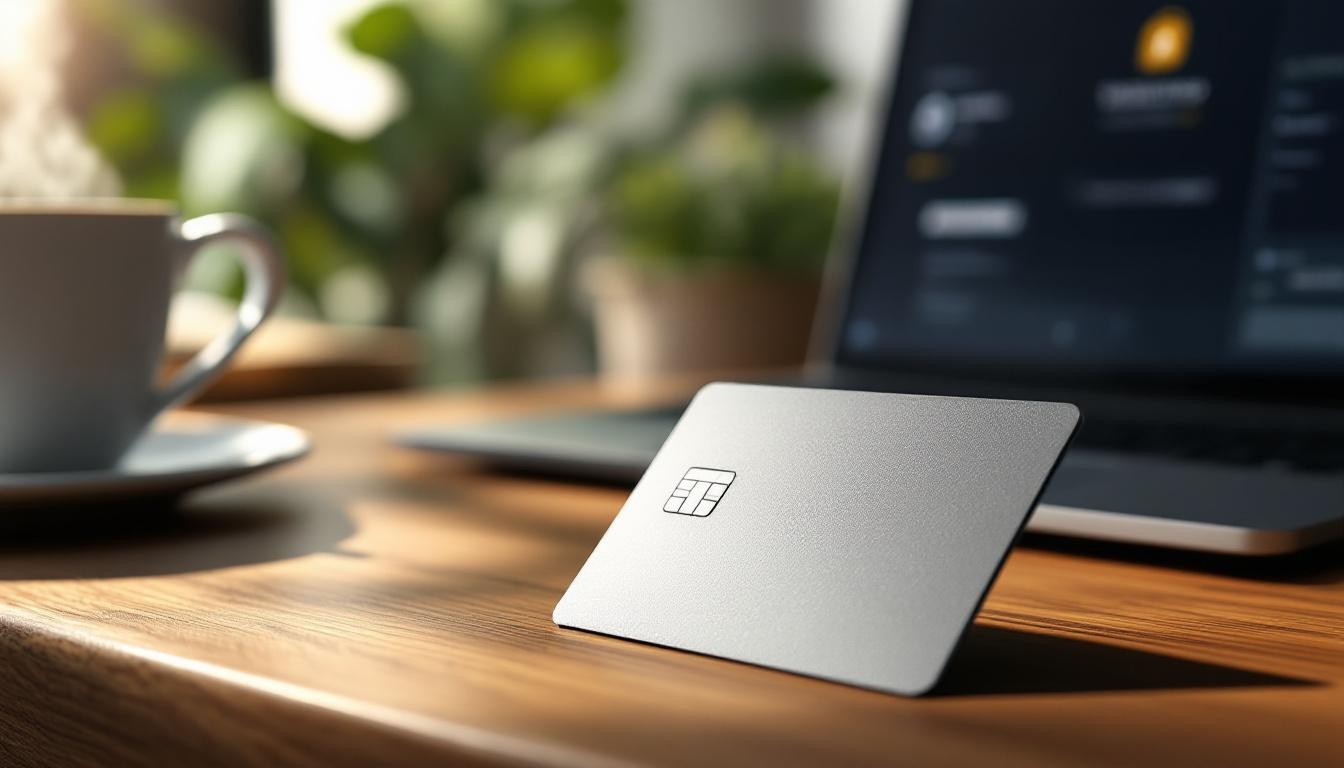Online Payment: Are Cards Without Links to Your Current Account Safer?
With the rise of digital technologies, the question of online payment security has become unavoidable for consumers and businesses. In this digitized universe, numerous solutions emerge to prevent bank card fraud, notably the use of bank cards that are not directly linked to the current account. But are these cards really a safer alternative? This is what we'll explore together.

What is a Card Without Link to a Current Account?
Cards without direct link to a current account are divided into several categories. These types of cards, often prepaid or virtual, offer users an additional layer of protection by not allowing direct access to their main funds. Thus, if the card information were compromised, the main balance would remain intact.
Prepaid cards require you to deposit a fixed amount on them before being able to use them. They allow certain control over your expenses, since you can only spend what you have loaded. Systematic authorization cards function similarly, checking the associated account balance before each transaction to avoid any overdraft.
Why Consider This Solution for Online Payments?
With the increase in phishing cases and information theft, protecting one's financial assets becomes crucial. Virtual cards appear here as a relevant innovation. Their use consists of generating temporary card numbers that expire after a single use or after a short period of time. This limits the risks of fraudulent reuse of payment data.
These cards often integrate advanced solutions such as dynamic cryptogram. The latter periodically modifies the usually static CVV code, thus making a potential duplicate much less useful for fraudsters. Reinforced authentication and transaction segregation are therefore strengthened, thus considerably reducing the risk of bank card fraud.
Advantages of Bank Cards Without Current Account
Using a card without direct link to your account presents several significant advantages for online payment security:
- Budget control: Prepaid cards, for example, allow precise management of how much you're ready to spend.
- Enhanced security: In case of fraud, only the loaded amounts can potentially be accessible.
- Ease of use: Simple to obtain and quick to recharge online, they are practical for regular or occasional purchases.
- Reinforced protection against phishing: With a temporary card number, it becomes difficult for pirates to profit from their phishing actions.
Comparison Between Different Types of Cards
| Card Type | Main Functionality | Security Level | |
| Debit card | Direct link with bank account | Average (subject to direct account access) | |
| Credit card | Allows borrowing up to a certain ceiling | High, thanks to reimbursement policy and provider protection | |
| Prepaid card | Pre-charge required, independent of current account | High, limited to card balance | |
| Virtual card | Temporary number generated for each purchase | Very high, avoids any subsequent fraudulent use |
Challenges and Potential Drawbacks
Despite numerous advantages, bank cards without direct link also present some constraints. First, they don't necessarily suit all payment situations, especially when goods delivery is involved and where reception validation might require a return to a physical card linked to an indubitable identity.
They may also be subject to certain daily spending limits, and their recharge sometimes requires additional fees. Their acceptance is not always unanimous among merchants, some preferring to deal with traditional cards, considered more reliable.
Authentication and Transaction Security
One of the cornerstones of online payment security now rests on strong authentication. To reinforce this security, banks and financial institutions integrate strict measures, such as dual authentication. This approach asks the user to validate their transactions via two different channels — generally by SMS confirmation and personal password or biometric.
The security process also includes monitoring suspicious and unauthorized transactions, sometimes with geolocation possibility, guaranteeing that the cardholder is indeed the one initiating the transaction. Indeed, acting quickly as soon as suspicion exists constitutes an essential measure to protect your financial data.
The Future of Online Bank Cards
The rapid evolution of technologies suggests even more progress in the field of secure payments. We already observe the emergence of technologies like fingerprint and facial recognition for transaction validation.
However, it is likely that physical bank cards will eventually give way to totally digital integrated solutions, such as electronic wallets secured by bi-factorial, or even multi-factorial authentication.
Frequently Asked Questions About Cards Without Link to Your Current Account
How does a virtual bank card work?
A virtual bank card generates a unique number for each transaction, making reuse of your information impossible. This temporary number expires after purchase or a defined delay, guaranteeing a superior level of security against fraud and phishing.
Are prepaid cards accepted everywhere?
Prepaid cards are generally accepted where debit and credit cards are accepted. However, certain establishments may impose certain restrictions, so it's always wise to verify acceptability with the seller before purchase.
What fees are associated with cards without current account?
Users might encounter fees when loading or using prepaid cards. Other hidden costs may include monthly fees, international commissions or various administrative fees.
What to do in case of loss or theft of a virtual card?
Most virtual card motorizations will allow you to immediately deactivate the compromised number via a mobile application or secure website. It is strongly advised to report the loss to the provider in order to regenerate a new card or change personalized security parameters.
Contactless Fraud: Is the Rechargeable Card the Best Defense in 2025?
Banking Data Theft: How a Prepaid Card Protects Your Payments
Similar articles

Travelling Abroad with a Prepaid Card: The Complete 2025 Guide

Blocked, lost or stolen bank card: procedures to follow in 2025
The information provided on this blog is presented for informational purposes only and has no contractual or legal value. Although we strive to ensure the accuracy, completeness and updating of the published content, it may contain errors, omissions or inaccuracies. Carte Veritas and the authors of the articles cannot be held responsible for decisions or actions taken based on the information contained in this blog. Any use of this information is made at your own risk and under your sole responsibility. We encourage you to consult a qualified professional or an expert for any important question or decision relating to the subjects discussed. In addition, the information presented on this site may be modified or updated without notice. By visiting this blog, you agree that Carte Veritas and its partners are released from any liability concerning losses, direct or indirect damages, or consequences arising from the use of the contents of this site, whether they are linked to errors, omissions or the interpretation of the information published.
